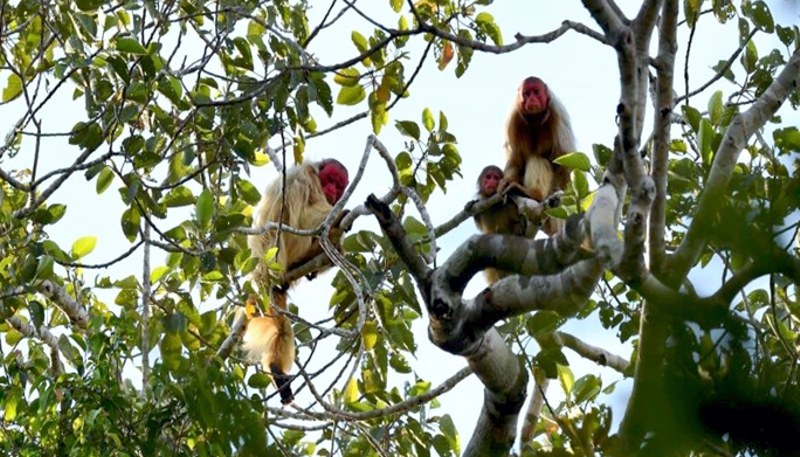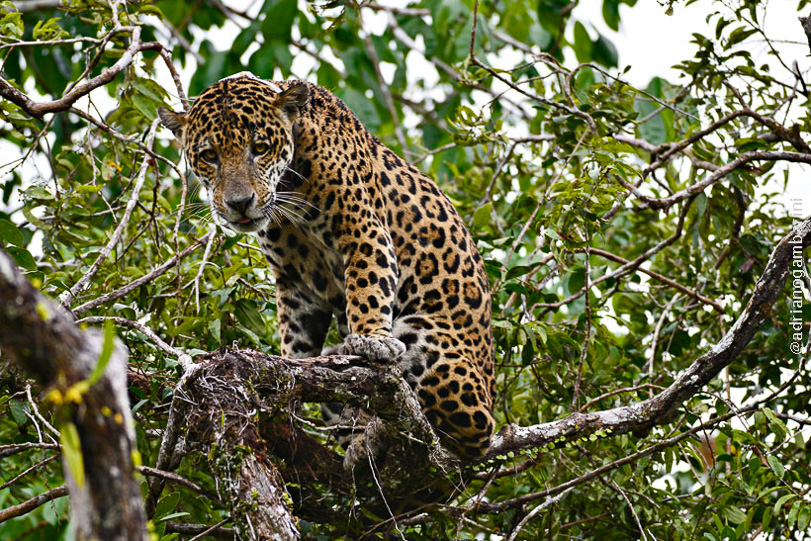

Destinations
Experiences
 |
L A
D A T C O T O U R
S |
 |
||||||||
| HOME | South America | Falkland Islands | Antarctica | Unique Destinations |
Unique Experiences |
Newsstand | ||||
 |
Mamiraua Sustanable Developement Reserve near Tefe, Brazil
|
 |
A COMPENDIUM ON MAMIRAUA SUSTAINABLE DEVELOPMENT RESERVE - compiled by LADATCO
From Lonely Planet - the introduction to a longer article available online
Up River, Down River
For 150 million years after South America and Africa went their separate ways, the Amazon river actually flowed east to west, the opposite direction to which it flows today. That’s why Amazonian stingrays are most closely related to Pacific species, and how telltale sediment from eastern South America ended up in the middle of the rainforest. It was only 15 to 20 million years ago that the Andes shot up and blocked the river’s westward exit. Around the same time, a smaller ridge of land, now called the Purus Arch, rose like a spine in the middle of the continent.
East of the Purus Arch the river started draining into the Atlantic Ocean, but west of there, the water was trapped and a huge inland sea formed. Sediment deposited during that period form the sandy soil typical of the Amazon today. Eventually the water poured over the Purus Arch, gouging a deep channel near present-day Óbidos – still the narrowest and deepest part of the river – and the Amazon returned to being a river, but now flowing west to east.
---------------------------------
From wwf.panda.org article "MAMIRAUA and the Flooded Forests of the Brazilian Amazon" by Claudio C. Maretti, WWF Network Living Amazon Initiative, Leader
A rich part of the Amazon’s history, Mamirauá is in the varzeas of the Solimoes River in the middle Amazon region. The varzeas are flooded forests that are fed by the so-called “white” water rivers from the nutrient-rich Andean slopes. The other two predominant river types in the Amazon being the “black” water rivers, poor in sediment that flow from the Guyana shield, and the “clear” water rivers, also nutrient-poor that flow from the Brazilian Highlands in central Brazil. Mamirauá is a dynamic hydrologic area where water levels can vary some 12 metres between the high (May-June) and low (September) water seasons. Water and sediment are constantly destroying and building islands and shores.
Due to their richness in natural resources, the varzeas traditionally are well used by local people. The varzeas support life and livelihoods through farming, fishing and forest products. People here vote, go to church, raise children and have fun. The river provides the only transportation route in the region and local communities live in relative isolation.
----------------------------------------From Wikipedia
The Mamirauá Sustainable Development Reserve (Portuguese: Reserva de Desenvolvimento Sustentável Mamirauá) in the Brazilian state of Amazonas, near the city of Tefé, is a 4,300-square-mile (11,000 km2) reserve near the village of Boca do Mamirauá. It includes mostly Amazonian flooded forest and wetlands.
The Mamirauá Sustainable Development Reserve is divided between the municipalities of Uarini (18.68%), Tonantins (1.24%), Maraă (26.74%), Japurá (1.33%) and Fonte Boa (52.01%) in the state of Amazonas. It has an area of 1,124,000 hectares (2,780,000 acres).[4] It covers the elongated triangle between the Solimőes River(Upper Amazon) to the south, the Auati-Paraná Canal, which leaves the Solimőes and meanders in a generally eastward direction to join the Japurá River to the north, and the Japurá from the junction with the Auati-Paraná to the point where it joins the Solimőes.[5] It adjoins the Auatí-Paraná Extractive Reserve to the north. The Amană Sustainable Development Reserve lies on the opposite bank of the Japurá to the east.[5]
Mamirauá is recognized by the international Ramsar Convention, as a wetland of global importance, as well as part of a World Heritage Convention's natural site. At present, it is included in one of the ecological corridors to be implemented by the PPG-7 Program for the Protection of Brazilian Tropical Forests.
Jaú National Park was inscribed by UNESCO as a World Heritage Site in 2000.[6] It became part of the Central Amazon Ecological Corridor, established in 2002.[7] In 2003 the property was expanded by the addition of the Anavilhanas National Park, Amană Sustainable Development Reserve and Mamirauá Sustainable Development Reserve to form the Central Amazon Conservation Complex, a larger World Heritage Site.[6]
The reserve is the legacy and life work of Brazilian scientist José Márcio Ayres.
Mamirauá has a human population estimated in 6,306 individuals, including amazonian caboclo, Ticuna, Cambeba and Cocama ameridian groups.
WILDLIFE
The reserve is in the Solimőes-Japurá moist forests and Purus várzea ecorgions,[8][9] There are two endemic primates, the white uakari (Cacajao calvus calvus) and black-head squirrel monkey (Saimiri vanzolinii). The reserve is also home of other kinds primates, such as the Juruá red howler monkey, the Peruvian spider monkey, pygmy marmosets and saki monkeys. The reserve also harbours other arboreal mammals species such as the brown-throated sloth, the South American coati, the northern Amazon red squirrel and the collared anteater[10]. Land mammals are not that common as most of the territory is flooded during the wet season, although jaguars may reside and remain in the forest even during flooding[11]. Mamirauá hosts a large diversity of birds, with more than 400 species recorded, including toucans, harpy eagle, hoatzin, parrots and, specially, aquatic birds. The most conspicuous fish species are tambaqui, piranha and pirarucu. Mamirauá is also a perfect place to spot the Amazon river dolphins, both boto and tucuxi.